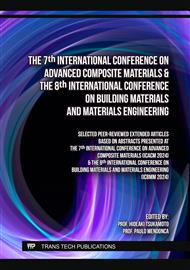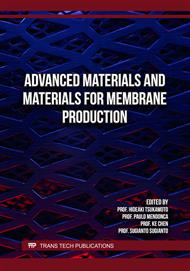p.57
p.67
p.73
p.81
p.87
p.93
p.101
p.111
p.117
The Effect of Nanosilica on the Fresh Properties of Sustainable Self-Compacting Concrete
Abstract:
The purpose of the current investigation was to lower the CO2 footprint of an industrial self-compacting concrete mix, which currently consists of CEMI 42.5R solely, without any natural pozzolanas or supplementary cementitious materials. The target compressive strength of the industrial mix needed to exceed 55 MPa at 28 days of curing. In the present study we attempted a 20% reduction of CEMI 42.5R (by total mass of solids) by adding 20% of limestone filler and subsequently added 1% of colloidal nanosilica, aiming (i) at leveraging strength loss due to the reduction of Portland cement, (ii) at providing early strength and (iii) at enhancing the microstructure. A water to binder ratio of 0.42 was selected and superplasticizers were added. Fresh properties were studied in terms of slump-flow test, density and 1-day strength. In addition, the 28 day compressive strength was also tested, meeting the mix design strength requirement. Interestingly, the slump flow was improved, indicating better packing effect, however the compressive strength of the control formulations was higher than that of the nanoenhanced formulation. Further insights are also provided.
Info:
Periodical:
Pages:
87-92
Citation:
Online since:
December 2024
Price:
Сopyright:
© 2024 Trans Tech Publications Ltd. All Rights Reserved
Share:
Citation:



